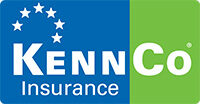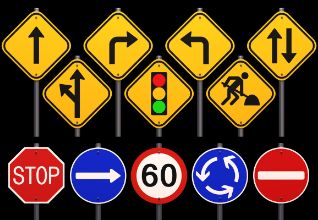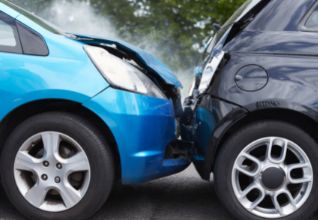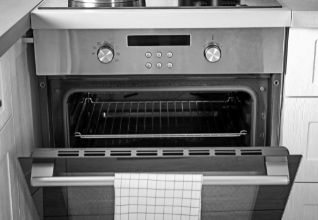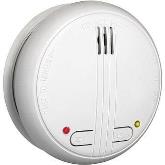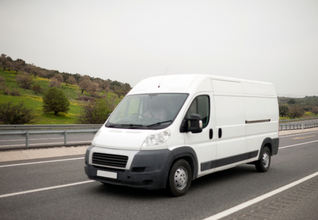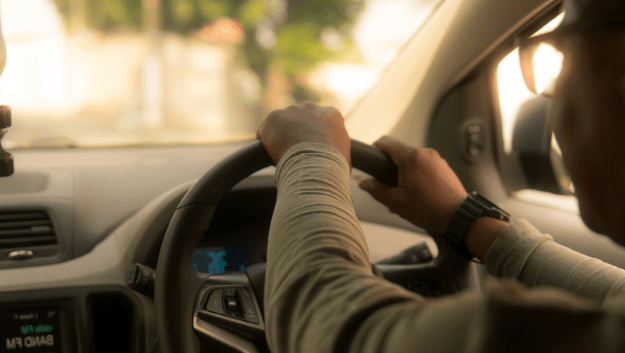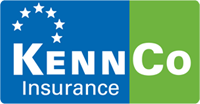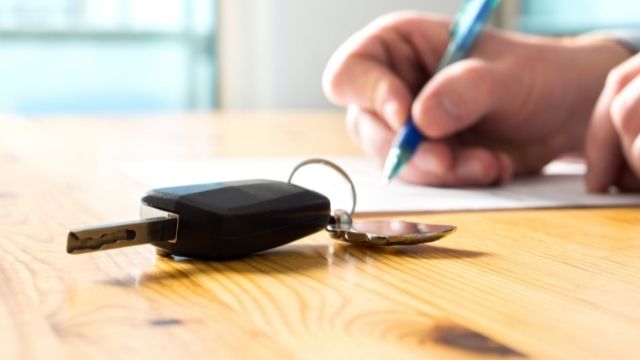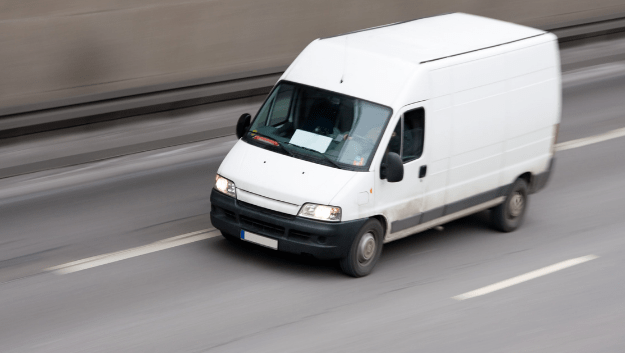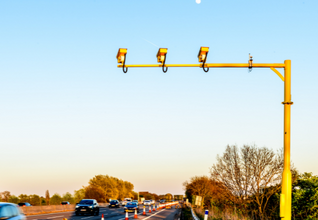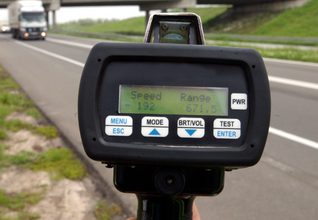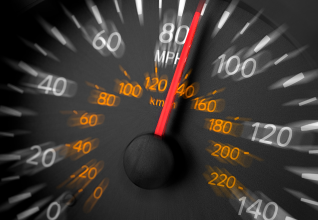Like every time you get behind the wheel, learning to drive is a journey. It’s a journey filled with learning, practice and, inevitably, a few mistakes along the way.
And as the test date approaches, people often find themselves worrying or stressing over driving test mistakes which leads to pre-test nerves. Understanding how mistakes are categorised and how many you’re allowed to make during your driving test can significantly ease the anxiety that comes with taking the test.
Our guide below provides the specifics of permissible mistakes in the Irish driving test and offers tips on how to avoid them.
The Driving Test in Ireland
Once you’ve passed your theory test, held a learner’s permit for at least 6-months and completed your EDT, you are eligible to take the driving test in Ireland.
The Irish driving test is designed to assess your ability to operate a vehicle safely and competently on public roads. There are number of different elements, including questions on the Rules of the Road, a road driving component, and a manoeuvres section.

The test evaluates your driving skills, decision-making, and adherence to traffic laws. And covers a wide range of driving scenarios and skills, including:
- Adherence to traffic laws
- Observation and awareness
- Positioning on the road
- Control of the vehicle
- Anticipation and reaction to other road users
Duration
The driving test lasts approximately 30 to 40 minutes. This time frame allows the examiner to assess a variety of driving situations and manoeuvres.
Components of the Test
Oral Test: Initially, you’ll be asked questions on the Rules of the Road, road signs, and under-the-bonnet checks. This assesses your theoretical knowledge.
Technical Checks: You will be asked to identify and explain various vehicle checks to ensure the car is safe for driving. This could include checking oil levels, brake fluid, tyre pressures, and lights.
Practical Test: The bulk of the test is the practical component, where you’ll be assessed on your driving skills in a variety of road and traffic conditions. During the practical test you will be assessed in a number of different driving scenarios and situations, including:
- Moving off
- Driving in traffic
- Turning left and right
- Navigating roundabouts and junctions
- Understanding traffic signs signals
- Understanding hand signals
- Stopping
- Parking
- Reversing round a corner
- Performing a 3-point turn
- Hill starts
Manoeuvres: You’ll be required to demonstrate specific manoeuvres, such as reversing around a corner, turning about to face the opposite direction, and possibly hill starts and parallel parking.
Categorisation of Mistakes

Mistakes during the driving test are categorised into two main types: Grade 2 faults and Grade 3 faults.
Grade 1 Faults
Grade 1 faults are very minor errors that typically don’t affect your overall test result. Example of Grade 1s include hesitating before moving off, minor positioning errors on straights/bends or slight misuse of the car’s primary controls. While they don’t affect overall test results, too many in a single category, e.g. observation, may lead to a fault.
Grade 2 Faults
Grade 2 faults are errors that aren’t immediately dangerous but demonstrate a lack of complete understanding or control. Examples include incorrect mirror use, minor positioning errors, or not signalling timely.
You’re allowed to accumulate up to 8 Grade 2 faults without failing your test, provided they don’t form a pattern indicating a significant deficiency in driving ability. Repeating the same Grade 2 fault four times or exceeding 8 Grade 2s will result in failure of your driving test.
Grade 3 Faults
Grade 3 faults are considered serious or dangerous mistakes and committing a single Grade 3 fault results in automatic failure. These are mistakes that pose a risk to the driver, passengers and other road users and pedestrians.
Examples include failing to yield, dangerous manoeuvres or a lack of control over the vehicle. Committing a single Grade 3 fault will result in failing the driving test.
How Many Mistakes Are Allowed?
The allowance in the Irish driving test is up to 8 Grade 2 faults. However, it’s crucial to understand that these should not all be in the same category of driving skill, as this could indicate a significant area of weakness leading to failure.
Accumulating more than 9 or more Grade 2 faults, or committing any Grade 3 fault, will result in a fail. As per the RSA marking guidelines, failure of the test occurs if the applicants picks up:
- 1 or more grade 3 faults.
- 4 of the same grade 2 faults for a single aspect.
- 6 or more grade 2 faults under the same heading.
- 9 or more grade 2 faults overall.
Common Reasons For Failing Your Driving Test
Many Irish drivers don’t pass their test first time around. While nerves can sometimes play a part on the day, reasons for failure most commonly come down to a lack of competency or consistency in a key area of safe driving. According to the RSA, the most common reasons for failure are:
- Inadequate observation moving off, at junctions, at roundabouts and when changing lanes
- Failure to anticipate the actions of other drivers
- Incorrect road position on the straight, on bends, turning left, turning right, at roundabouts, and when overtaking
- Inadequate progress at junctions, roundabouts, on the straight, and when overtaking
- Incorrect or inadequate use of mirrors and signals
- Non-compliance with traffic controls, eg road signs and markings and traffic lights
- Incorrect, inadequate or inappropriate use of vehicle controls, including gears, clutch, accelerator, steering, handbrake, footbrake, and secondary controls
- Excessive speed for the road or traffic conditions
- Failure to yield the right of way to others
- Lack of competence in the reverse and U-turn manoeuvres
Tips for Minimising Mistakes
Practice Makes Perfect
The most effective way to reduce mistakes is through ample practice. Spend as much time as possible practising driving in a variety of conditions and settings. This not only improves your skills but also builds confidence.
Understand the Rules
A thorough understanding of the Rules of the Road is crucial. This knowledge forms the basis of safe driving practices and decision-making during the test.
Take a Pre-Test
Consider taking a pre-test with your instructor. This can simulate the test experience, helping you to become accustomed to the format and pressure of the actual test.
Learn from Feedback
If you’re taking lessons from a driving instructor, pay close attention to their feedback. They can help identify areas of weakness and provide targeted advice to improve your driving.
Stay Calm
Test anxiety can lead to mistakes. Practice relaxation techniques and maintain a positive mindset. Remember, the examiner expects to see a human driving, not a robot. They understand that minor mistakes can happen.
Our Thoughts
Passing the driving test in Ireland requires a blend of skill, knowledge, and composure. Understanding what’s expected and the mistakes you’re allowed to make can help reduce anxiety and pre-test nerves.
Remember, the goal of the driving test is not perfection but to demonstrate a competent and safe level of driving. By concentrating on your driving, putting in the practice, and approaching the test with a calm and prepared mindset, you can get that full license.
Good luck! And once you’ve passed your test, remember to contact KennCo for a fast, reliable quote on your car insurance. And if you’re a young driver, learn how KennCo can help you get your car on the road quickly and easily. Call us today at 01 409 2600.
